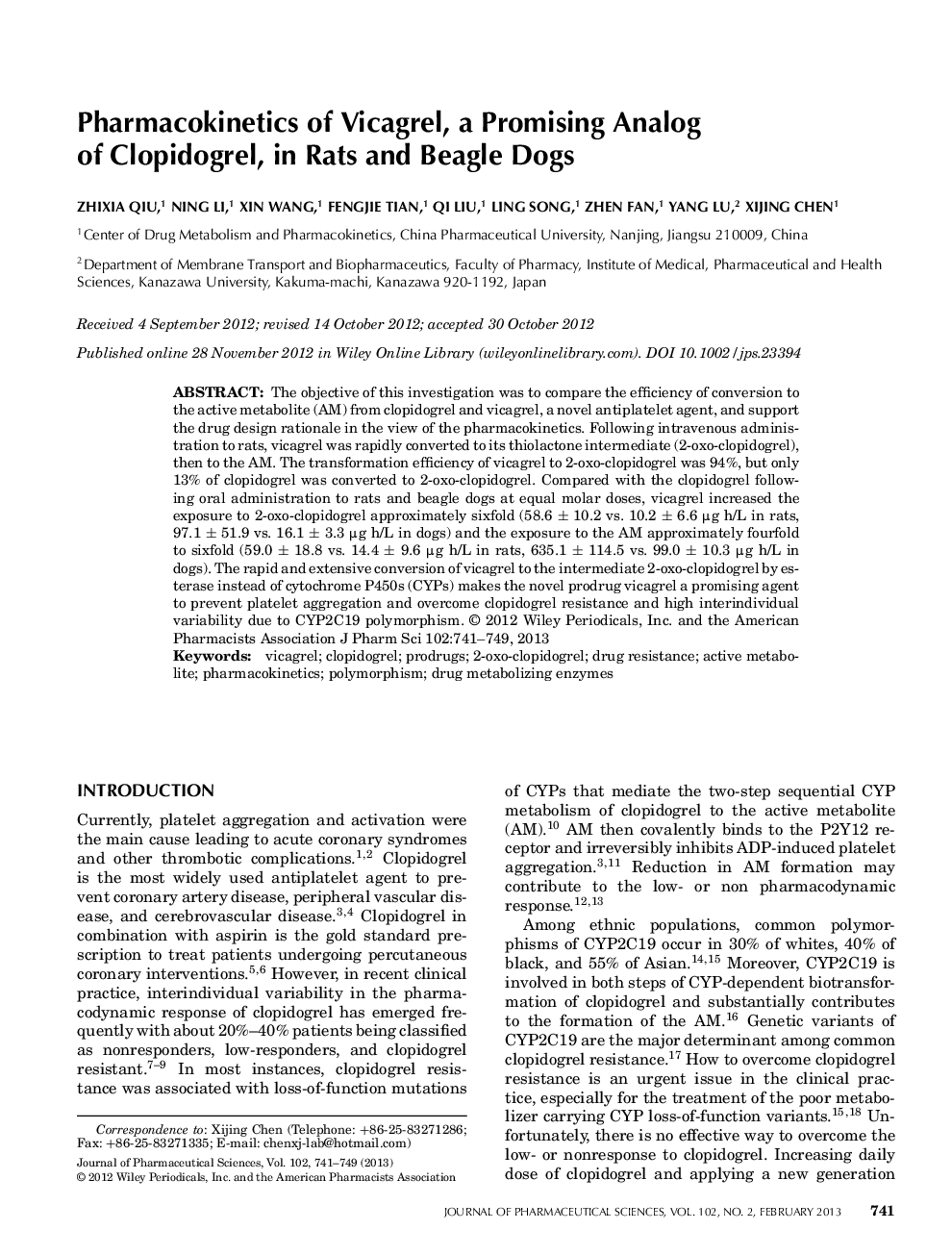| Article ID | Journal | Published Year | Pages | File Type |
|---|---|---|---|---|
| 2485044 | Journal of Pharmaceutical Sciences | 2013 | 9 Pages |
Abstract
The objective of this investigation was to compare the efficiency of conversion to the active metabolite (AM) from clopidogrel and vicagrel, a novel antiplatelet agent, and support the drug design rationale in the view of the pharmacokinetics. Following intravenous administration to rats, vicagrel was rapidly converted to its thiolactone intermediate (2-oxo-clopidogrel), then to the AM. The transformation efficiency of vicagrel to 2-oxo-clopidogrel was 94%, but only 13% of clopidogrel was converted to 2-oxo-clopidogrel. Compared with the clopidogrel following oral administration to rats and beagle dogs at equal molar doses, vicagrel increased the exposure to 2-oxo-clopidogrel approximately sixfold (58.6 ± 10.2 vs. 10.2 ± 6.6 µg h/L in rats, 97.1 ± 51.9 vs. 16.1 ± 3.3 µg h/L in dogs) and the exposure to the AM approximately fourfold to sixfold (59.0 ± 18.8 vs. 14.4 ± 9.6 µg h/L in rats, 635.1 ± 114.5 vs. 99.0 ± 10.3 µg h/L in dogs). The rapid and extensive conversion of vicagrel to the intermediate 2-oxo-clopidogrel by esterase instead of cytochrome P450s (CYPs) makes the novel prodrug vicagrel a promising agent to prevent platelet aggregation and overcome clopidogrel resistance and high interindividual variability due to CYP2C19 polymorphism.
Keywords
Related Topics
Health Sciences
Pharmacology, Toxicology and Pharmaceutical Science
Drug Discovery
Authors
Zhixia Qiu, Ning Li, Xin Wang, Fengjie Tian, Qi Liu, Ling Song, Zhen Fan, Yang Lu, Xijing Chen,
